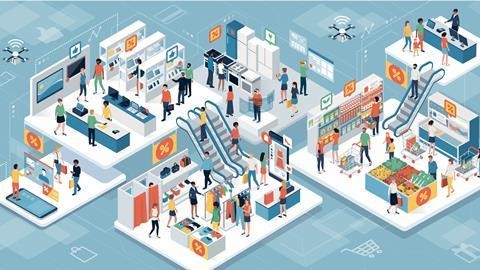
Retail is undergoing a profound transformation, shaped by shifting consumer expectations, technological advancements, and global economic pressures. What once revolved around physical storefronts and predictable foot traffic has evolved into a dynamic ecosystem where digital and physical experiences intersect, and agility is no longer optional—it’s essential. The future of retail isn’t about returning to pre-pandemic norms or clinging to legacy models. It’s about adapting to new realities with creativity, responsiveness, and a deep understanding of what customers truly value.
One of the most significant shifts is the redefinition of convenience. Consumers now expect seamless, personalized experiences across channels, whether they’re browsing online, picking up in-store, or engaging through social platforms. This omnichannel expectation has forced retailers to rethink infrastructure, logistics, and customer service. It’s no longer enough to have a website and a physical location. The integration between the two must be fluid, with real-time inventory visibility, flexible fulfillment options, and consistent branding. For example, a customer might discover a product on Instagram, check availability on a mobile app, and complete the purchase via curbside pickup—all within the same day. Retailers that can deliver this kind of frictionless experience are not just meeting expectations—they’re setting the standard.
Technology plays a central role in enabling this evolution. Artificial intelligence, machine learning, and data analytics are helping retailers anticipate demand, personalize marketing, and optimize supply chains. These tools allow businesses to move from reactive to proactive, identifying trends before they peak and tailoring offerings to individual preferences. For instance, predictive analytics can inform inventory decisions, reducing waste and improving margins. Chatbots and virtual assistants enhance customer engagement, offering support that feels immediate and intuitive. But technology alone isn’t the answer. It must be deployed thoughtfully, with a clear understanding of the customer journey and a commitment to enhancing—not replacing—human connection.
The physical store is not disappearing, but its purpose is changing. Rather than serving solely as a point of sale, brick-and-mortar locations are becoming experiential hubs. They offer tactile engagement, brand immersion, and community connection. Retailers are experimenting with showroom-style layouts, interactive displays, and events that draw people in for reasons beyond shopping. This shift requires a new kind of design thinking—one that prioritizes flexibility, storytelling, and emotional resonance. A well-designed store can become a destination, a place where customers feel inspired, informed, and valued. In this context, staff roles also evolve from transactional to relational, with employees acting as brand ambassadors and experience guides.
Sustainability is another driving force in the future of retail. Consumers are increasingly conscious of environmental impact, ethical sourcing, and corporate responsibility. Retailers must respond not just with messaging, but with meaningful action. This includes rethinking packaging, reducing carbon footprints, and embracing circular models such as resale, rental, and recycling. Transparency is key. Customers want to know where products come from, how they’re made, and what happens after they’re used. Brands that can communicate this clearly and authentically will earn trust and loyalty. Sustainability is no longer a niche concern—it’s a business imperative.
Economic volatility and supply chain disruptions have also reshaped retail strategy. Flexibility and resilience are now central to operations. Retailers are diversifying suppliers, investing in local sourcing, and building more responsive logistics networks. This shift is not just about risk mitigation—it’s about creating systems that can adapt quickly to change. For example, during periods of high demand or unexpected shortages, having alternative fulfillment options or regional distribution centers can make the difference between meeting customer needs and losing market share. Agility is not a buzzword—it’s a survival skill.
The role of data in retail cannot be overstated. Every interaction, transaction, and engagement generates insights that can inform strategy. But data must be handled responsibly. Privacy concerns and regulatory frameworks demand that retailers be transparent and ethical in how they collect and use information. Building trust around data is as important as leveraging it for personalization. Customers are willing to share information when they believe it will enhance their experience and be protected. Retailers must strike a balance between innovation and integrity, ensuring that data-driven decisions serve both business goals and customer interests.
Talent is another critical factor in retail’s future. As roles evolve and technology becomes more embedded, the skills required are changing. Retailers must invest in training, development, and culture to attract and retain top talent. This includes fostering environments that value creativity, collaboration, and continuous learning. Employees who feel empowered and supported are more likely to deliver exceptional customer experiences. In a competitive landscape, talent can be a differentiator as powerful as product or price.
Ultimately, adapting to new realities in retail means embracing complexity with clarity. It means recognizing that change is constant and that success lies in the ability to evolve without losing sight of core values. Retailers that listen closely to their customers, invest in meaningful innovation, and build resilient systems will not only survive—they’ll thrive. The future of retail is not a destination—it’s a journey. And the businesses that navigate it with agility, empathy, and vision will shape what comes next.